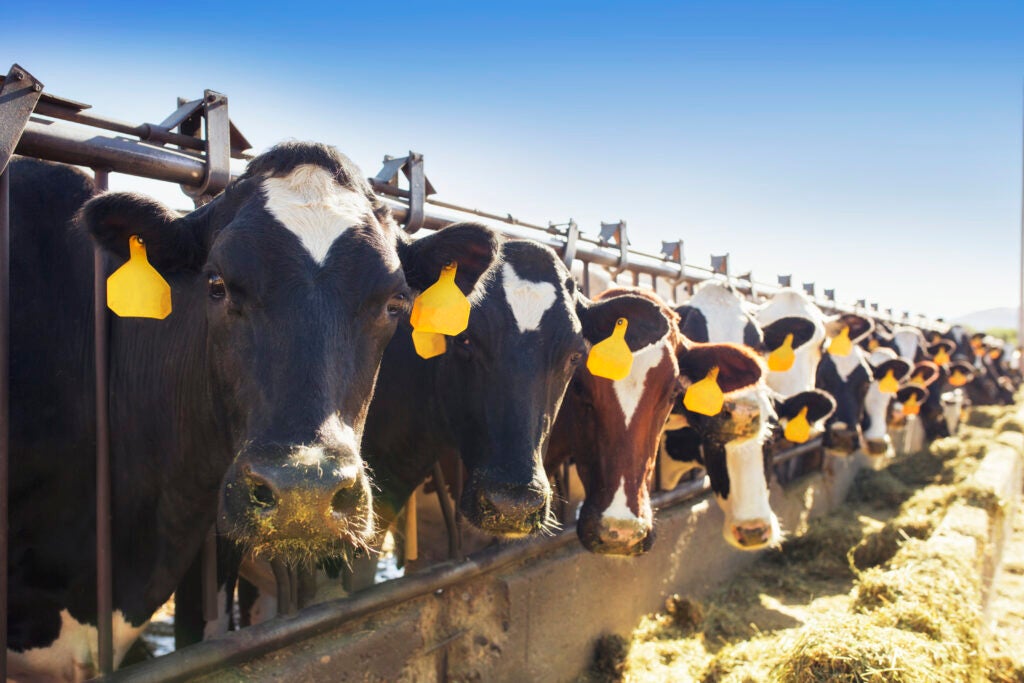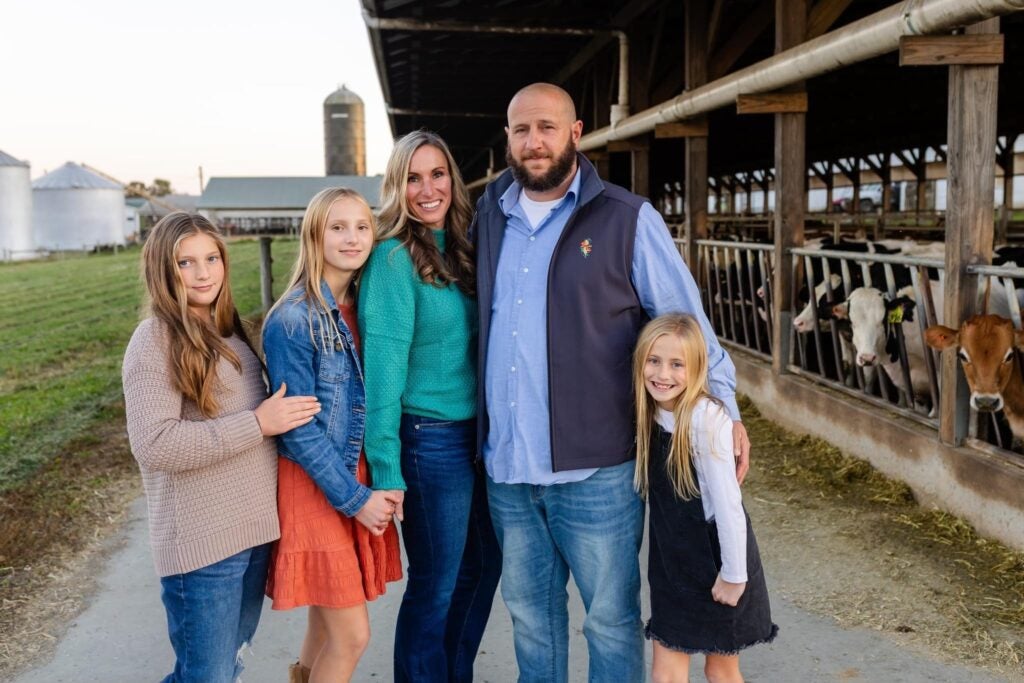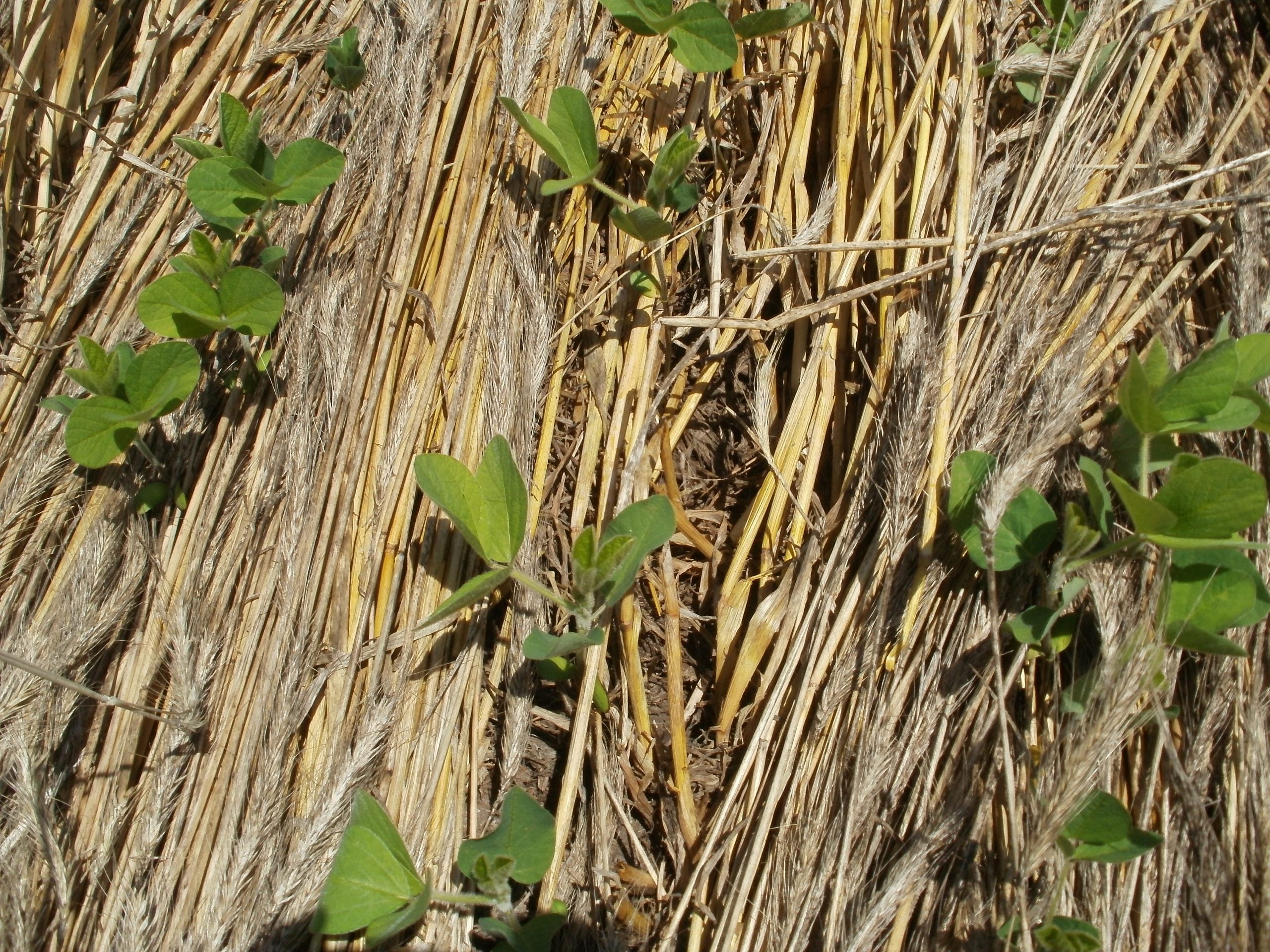By Mallory Honan, Scientist, Livestock Methane; Jack Killcoyne, Senior Research Analyst, Global Livestock Methane; Peri Rosenstein, Senior Scientist, Livestock Systems
A dairy cow’s diet is an integral part of her well-being and productivity; it’s also a critical opportunity for reducing methane emissions. Similar to humans, what cows eat impacts their ability to live healthy, productive lives. Therefore, a major priority for farmers and nutritionists is formulating a diet that satisfies their cows’ dietary requirements.
Unlike humans, though, cows are ruminants — animals that have a compartmentalized digestive organ (three pre-stomachs and one true stomach) — and they digest food very differently. The largest component of their pre-stomach and main site of digestion is aptly named the rumen. This chamber acts as a fermentation vat, with microbes breaking down nutrients from feed. The cow then burps out methane produced as a byproduct via these microbial digestive processes, also known as enteric fermentation.











